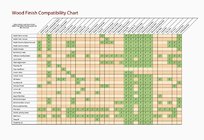Hi, new to this forum and need som advice.
I make my own sander sealer and shortly my own abrasive sander.
I assume that I use me sander sealer, then the abrasive paste, followed by a wax polish finish.
Can someone confirm that is the correct sequence.
Thanks,
Graeme
I make my own sander sealer and shortly my own abrasive sander.
I assume that I use me sander sealer, then the abrasive paste, followed by a wax polish finish.
Can someone confirm that is the correct sequence.
Thanks,
Graeme

